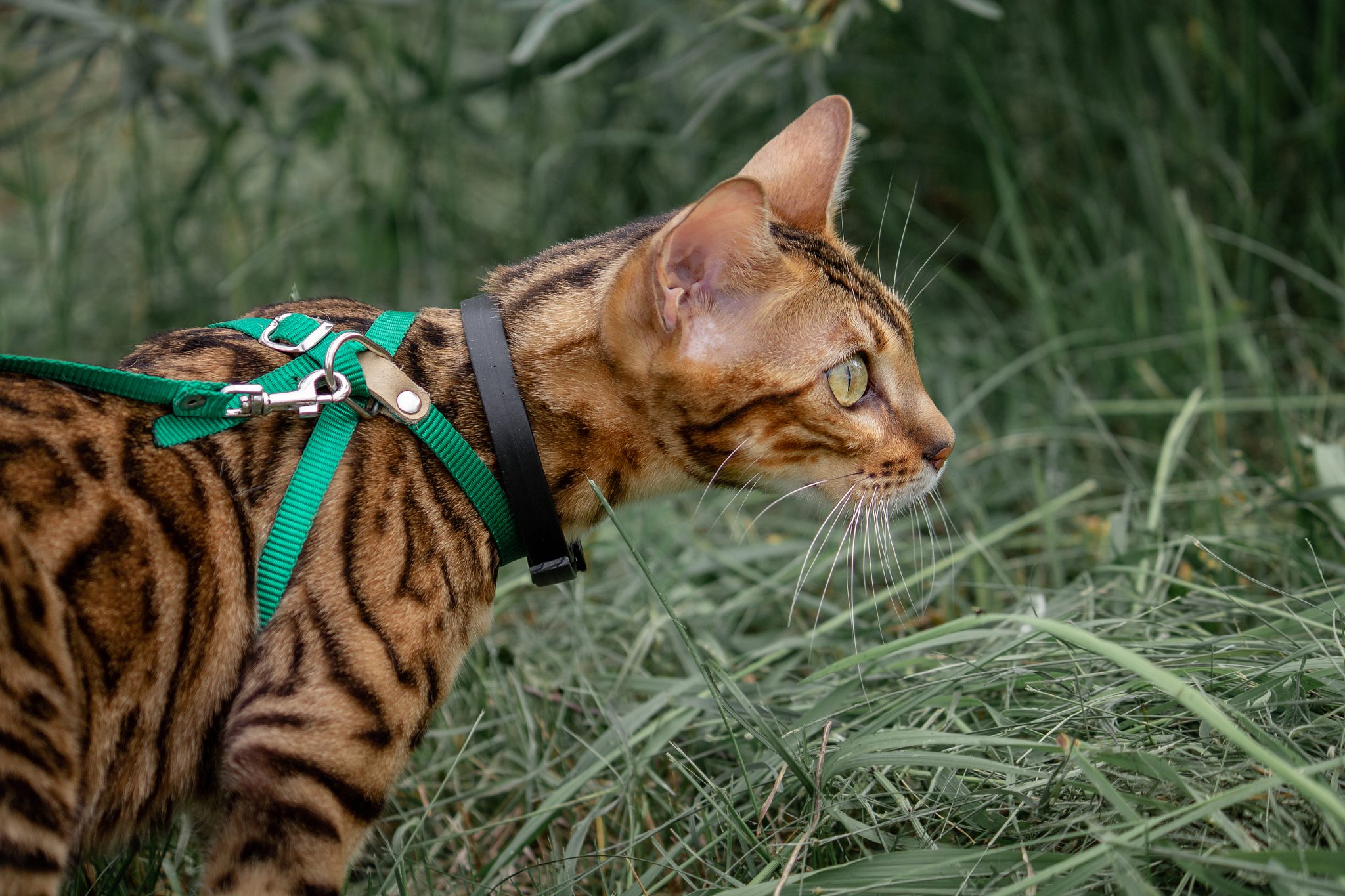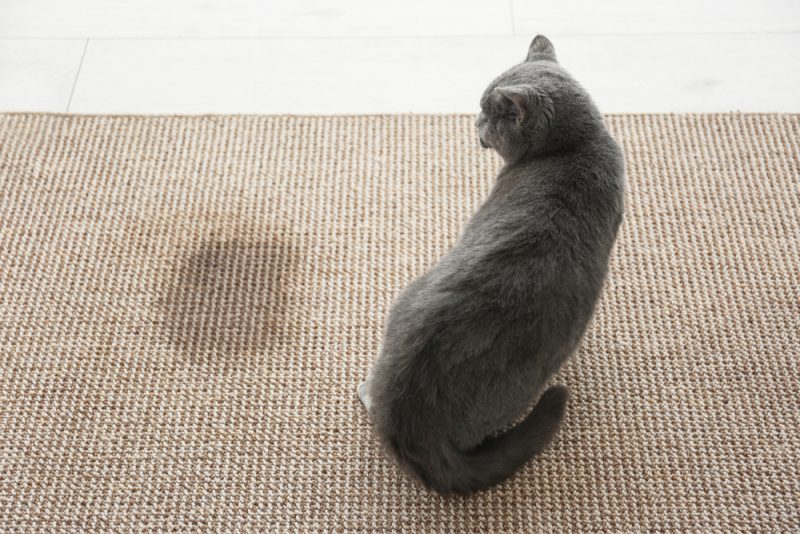Many cats enjoy spending time in the great outdoors, either on walks or while enjoying catios and other enclosures. Fresh breezes and blue skies are soothing for even the most cantankerous feline soul, and if you’re an avid hiker, you may be wondering if it’s possible to take your buddy with you. The answer depends entirely on the cat.
Some mellow cats that don’t enjoy exploring strange lands may not enjoy hiking, preferring to stay home and watch birds on TV. More adventurous pets, on the other hand, may be open to the idea. With a few safety precautions and a bit of preparation, it’s possible to head into the woods with adventurous cats. Keep reading for more on hiking with a feline companion.

Evaluate Your Pet
Just like some cats hate being picked up, some cats aren’t interested in being outdoors for long. Your first step is to determine whether hiking is an activity that would appeal to your cat.
Cats that dislike unpredictable situations or become anxious around new people or animals may not make great hiking companions due to the numerous novel stimuli the two of you will undoubtedly encounter.
Pets that do not like being picked up and carried may become cranky if forced to hang out in a backpack. Other cats that enjoy walking on leashes in the city may be fine in rural environments or may become scared when they see a rabbit for the first time.

Train Your Cat
It’s generally a good idea to train your cat to walk on a leash and return to you when called before attempting any hiking trips. Cats must be harnessed and leashed when hiking to prevent them from running off and getting lost if startled or scared. Training cats to wear a harness and walk on a leash is relatively simple. Harnesses are safer for cats than collars; if your cat pulls while wearing one, the weight will be distributed over multiple points instead of their neck.
Give your cat lots of time to get used to wearing the harness, and provide treats and praise when they tolerate the contraption. You can move outside once your cat feels comfortable wearing a harness with a leash attached at home. While some cats keep it moving when walking with human companions, others prefer regular sniff stops.
Cats can wiggle out of harnesses when sufficiently motivated or frightened. So, it is critical to ensure your pet will come when called before heading off into the great outdoors with them. Getting cats to respond to their names with a few treats and patience is often reasonably easy. To get started, stand in front of your cat with a treat. Call your cat’s name and give them the treat when they turn their head and look at you.
Keep going until you’re pretty sure your cat has the idea. Move a few steps away and repeat the process. Give your cat the treat when they come to you when called. Keep your training sessions short to maintain your pet’s interest. Cats who’ve mastered these basics are ready to hit the big time, otherwise known as a local park, to practice their skills under more challenging conditions.

Preparing For a Hike
1. Get Your Pet Vaccinated
Consider contacting your veterinarian before heading off for a hike. Make sure all of your cat’s vaccinations are up-to-date, and let your veterinarian know you’re thinking of hiking with your cat so they can make appropriate vaccination recommendations.
Core vaccinations such as rabies and feline distemper (FVRCP) should be current, and depending on your region and lifestyle, your veterinarian may recommend additional vaccines such as feline leukemia virus (FeLV) for outdoor-exposed cats.
Remember to ask about flea and tick prevention options; your veterinarian can provide specific guidance relevant to your pet’s age and health. Parasite prevention should include protection against ticks, fleas, and heartworm, as some areas have mosquitoes that transmit Dirofilaria immitis to cats. Also, ask them to check your pet’s microchip and contact the correct microchip registry to ensure your current contact information is on file.
If you need to speak with a vet but can't get to one, head over to PangoVet. It's an online service where you can talk to a vet online and get the advice you need for your pet — all at an affordable price!

2. Practice
Give your cat time to adjust to wearing a harness and spend plenty of time “walking” outdoors close to home before heading out for a hike. Not only will it give your cat a chance to learn the ropes, but it’ll also allow you to see how your cat behaves during the outing and gauge how far they can comfortably walk, which you’ll need to know when planning your route and packing list.
Pack carefully, and take extra food, water, and treats for your cat. A cat backpack is essential if your buddy decides they’d rather not walk anymore. Practice walking around the area where you live with your cat in their backpack until they’re comfortable hanging out. Don’t forget to take a few jaunts with a fully packed backpack to ensure you can comfortably carry all your gear and your cat’s weight. Ensure your cat’s carrier or backpack provides adequate ventilation and is escape-proof. Avoid prolonged exposure to direct sunlight or extreme temperatures.
3. Pack the Essentials
Start with the 10 essentials, according to the National Parks Department, and ensure your cat’s necessities are covered. Pack a feline first aid kit, and consider signing up for an online Red Cross veterinary first aid class if you’re unsure what to do if something happens to your pet.
Don’t forget to take enough food and water to keep your cat happy if things don’t go as planned and the two of you stay in the woods overnight.
Include a small litter box or disposable litter bags, especially for longer outings, and bring waste bags to follow Leave No Trace principles.

4. Bring Your Identification
You should attach an ID tag featuring your pet’s name and contact information to your cat’s harness. ID tags make it easy for concerned bystanders to contact you if your cat escapes and refuses to return; they can call you instead of taking your cat to a veterinarian or shelter to have their microchip read. Also, adding a tracking device to your pet’s harness makes it possible to find your cat if they bolt.
Microchipping is the most reliable permanent identification, but GPS tracking devices can be a useful additional safeguard, as they allow you to track your cat’s location in real time.
5. Do Some Research
While several state, national, and local parks welcome pets, many have restrictions on the areas in which four-footers are allowed to roam and explore. Most US National Parks don’t allow pets in backcountry or wilderness areas.
State parks and USDA-run National Forests are often pet-friendly, but check the details before heading out to ensure you’re familiar with the rules or restrictions. Ensure you know the Leave No Trace principles and how they apply to your cat while hiking.
6. Be Flexible
Be willing to delay if the weather conditions are less than ideal. A rainy day might not be the best choice for an inaugural feline-human hike. Although you may be perfectly happy hiking on hot, humid days, cats may not be as comfortable. Both you and your cat will likely have a more enjoyable experience on a nice, sunny, temperate day.

Conclusion
It’s possible to hike with a cat, provided they’re interested and have learned a few basics, such as how to wear a harness and walk on a leash. Some cats aren’t cut out for outdoor adventures and prefer familiar environments like the bedroom.
If you decide to hike with your cat, don’t forget to include your feline companion in your safety planning; bring enough food, water, and treats to keep your feline happy for at least 24 hours longer than you plan to be on the trails.
Check your cat for ticks and other external parasites after every outdoor trip, and contact your veterinarian if you notice any signs of injury, lethargy, or illness following a hike.
Featured Image Credit: Amerigo_images, Shutterstock



















2 Responses
I love animals
We do too! Especially cats!